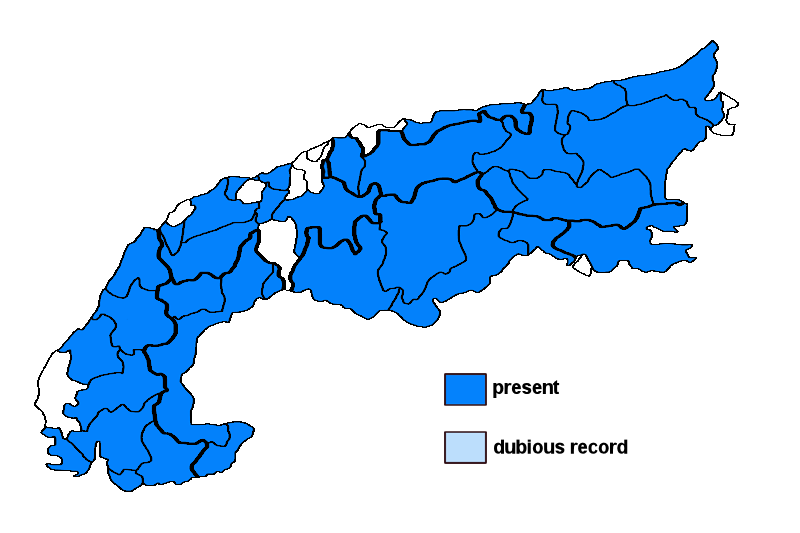Squamarina gypsacea (Sm.) Poelt
Syn.: Lecanora fragilis Zahlbr., Lecanora gypsacea (Sm.) Nyl., Lecanora smithii Ach., Lichen gypsaceus Sm., Placodium gypsaceum (Sm.) Trevis., Psoroma gypsaceum (Sm.) A. Massal., Squamaria gypsacea (Sm.) Nyl., Squamaria smithii (Ach.) DC., Squamarina gypsacea (Sm.) Poelt var. subcetrarioides (Zahlbr.) Pišút
Lichenised.
Substrate: calciferous rocks, intermediate rocks (such as calciferous schists), calciferous soil
Altitudinal range: from the mesomediterranean belt (potential vegetation: evergreen broad-leaved forests dominated by Quercus ilex) to the nival belt (above the lower limit of perennial snow and glaciers)
Note: in fissures of calcareous boulders, with optima both in the Mediterranean-submediterranean belts and in dry-continental parts of the Alps, often growing on the thalli of Romjularia lurida. The var. subcetrarioides, found in upland areas and not uncommon in the Alps, is worthy of further study.
Austria: Vorarlberg; Tirol; Salzburg; Kärnten; Steiermark; Oberösterreich; Niederösterreich (incl. Wien); Germany: Oberbayern; Switzerland: Bern; Graubünden; Luzern; Schwyz; Uri; Vaud; Valais; France: Alpes-de-Haute-Provence; Haute-Alpes; Alpes-Maritimes; Isère; Savoie; Haute-Savoie; Vaucluse; Var; Italy: Friuli; Veneto; Trentino Alto Adige; Lombardia; Piemonte; Valle d'Aosta; Liguria; Slovenia: Alpine and Pre-Alpine Slovenia; Liechtenstein





